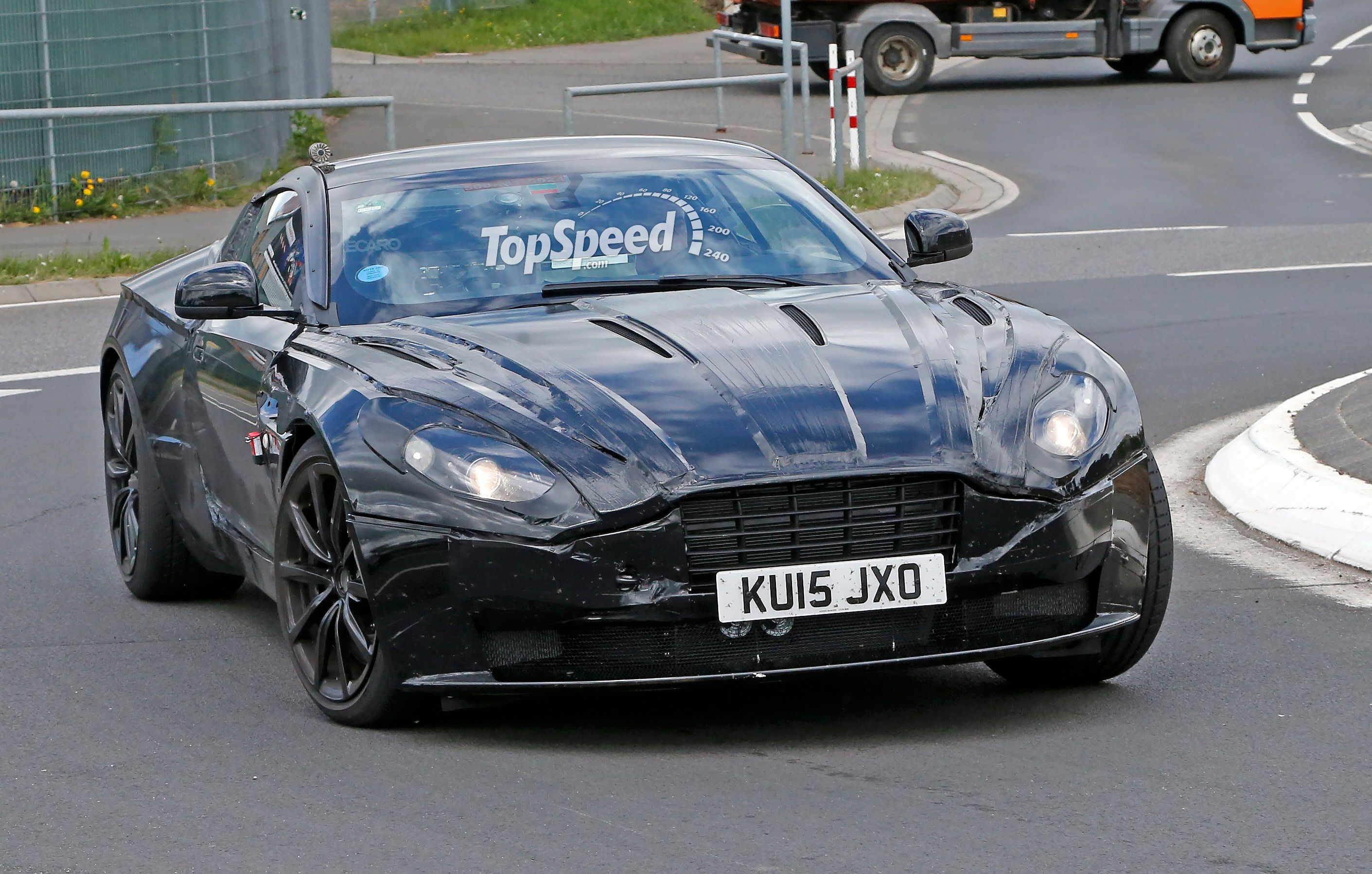Aston Martin->ke13 chief exec Andy Palmer wants to expand the British automaker’s catalog to encompass up to seven different models, including a few powered by all-electric->ke1030 and hybrid->ke147 drivetrains.
Palmer spoke with the UK-based publication Autocar at the Nurburgring->ke999 24-hour enduro race last month, saying that while the marque’s current engine configurations would not necessarily get the axe outright, AM’s intentions involve the utilization of electrification rather than downsizing when it came to future powerplant choices:
“I see in our future obviously V-12s, V-8s and probably battery-electric cars,” Palmer said. “As time evolves, there’s probably an inevitability to hybridisation, simply because, car by car, you can only downsize so much. I’d rather put a hybrid in there than an in-line four-cylinder.”
The statement coincides with mounting pressure from a variety of sources that to force Aston Martin to evolve, both as a brand and technologically. Those pressures include more stringent average emissions standards and the need to sell above the luxury carmaker’s traditional 7,000-units-per-year sales goals.
Regarding the 7,000-units-per-year figure, Palmer said, “It doesn’t work as a business model. It hasn’t worked for Aston Martin, as we have been bankrupt seven times. We didn’t find the solution.”
Palmer went on to say AM couldn’t “afford the multi-billion-dollar bill to engineer all of the active safety-connected car and autonomous car regulatory things that are coming along,” adding, “You either buy them, or you belong to a group that owns them. We don’t want to belong to a group that owns them, so therefore we’ve got to buy them.” However, Aston’s strategic partnership with Daimler, which owns a five percent stake in the British company, opens up access to the tech for Aston, which Palmer says can be mutually beneficial: “It works for Daimler and it works for us.”
Continue reading for the full story.
Why it matters
It’s a tale we hear all too often nowadays: well-known luxury/sports car maker with a long, prestigious history behind it struggles to keep up with the demands of the modern marketplace and must effectively rejuvenate itself through rapid innovation and conciliation to the status quo. One of the first times we saw this was back in the early 2000s, when Porsche->ke1 offered the Cayenne->ke212 amid an uproar of outrage from the Stuttgart faithful, which lambasted the German automaker for adding an SUV->ke145 to its lineup of sports cars.->ke506 The gambit worked, however, and now, the Cayenne is one the brand’s best-sellers.
But now, as the pressure from consumers and governmental agencies mounts, many other makes are following suit. Bentley,->ke15 for example, is gearing up to offer its own SUV, called the Bentayga->ke5088 -- a first for the nearly century-old company. Lamborghini->ke44 is also developing a performance crossover,->ke288 dubbed the Urus.->ke3276 Meanwhile, Porsche is mulling the idea of infusing its iconic 911->ke282 sports car with a plug-in hybrid drivetrain.
And while the purists will surely continue to rage, the moves are necessary in a world where cutthroat profitability and an appeal to the masses takes precedence over creating the raciest catalog possible. If everyone is doing it, then perhaps brand perception is less of an issue.
Regardless of the outcries from the forum warriors, Aston needs to work on its profitability. As Palmer stated, the company has yet to find a viable solution, but thinks it has “part of that solution” in the making with the DBX->ke2849 crossover, AM’s first SUV, which was recently confirmed for production, and the Lagonda->ke3711 sedan, which was recently made available in Europe. Both are intended to attract new buyers, specifically those outside the brand’s normal crowd of older males.
However, don’t think all this talk means Aston is going soft. In truth, the expansion to its lineup is to help support its customary offerings of high-end sports cars, like the recently released and outrageously overpowered Vulcan->ke5079 track tool.
Even with electrification on the docket, we can expect all kinds of apex-oriented goodness from the brand in the future, including the DB11,->ke5121 which is slated to replace the aging DB9.->ke210 Turbocharging is also another possible move for future powerplant configurations. Finally, Palmer had this little tidbit to whet our appetites: “Imagine something like a 4x4, 1,000 bhp silent Rapide. I think ‘Power, Beauty, Soul’ doesn’t say it has to be a gasoline engine. It just needs to be really powerful, really beautiful and set your heart on fire. I’d argue that 1,000 bhp on the ground would probably do that for you. So that’s the route we could go.”
An AWD, all-electric Rapide->ke1082 with a four-figure-output drivetrain? Hard to say no to that. Just so long as we can still get that legendary V-12 wail somewhere in Aston’s lineup, then by all means – electrify away.
Aston Martin DB11
Since 2001, Aston Martin has built the majority of its vehicles on the VH (Vertical/Horizontal) architecture. Now, the automaker plans on releasing its newer, lighter platform using parts from Mercedes’->ke187 high-end tuning division, AMG,->ke8 in the form of a replacement for the DB9. Also expected to make the leap from Daimler will be AMG’s biturbo 4.0-liter V-8, with nearly 550 horsepower available. A V-12 option is also projected, which will likely increase output to 650 horsepower.
Test mules are currently undergoing lapping sessions at the Nurburgring, and according to our spy photography, the car seems to have smaller dimensions. The interior, meanwhile, will be draped in the latest high-end materials and finest luxury appointment.
Read our speculative review here.

